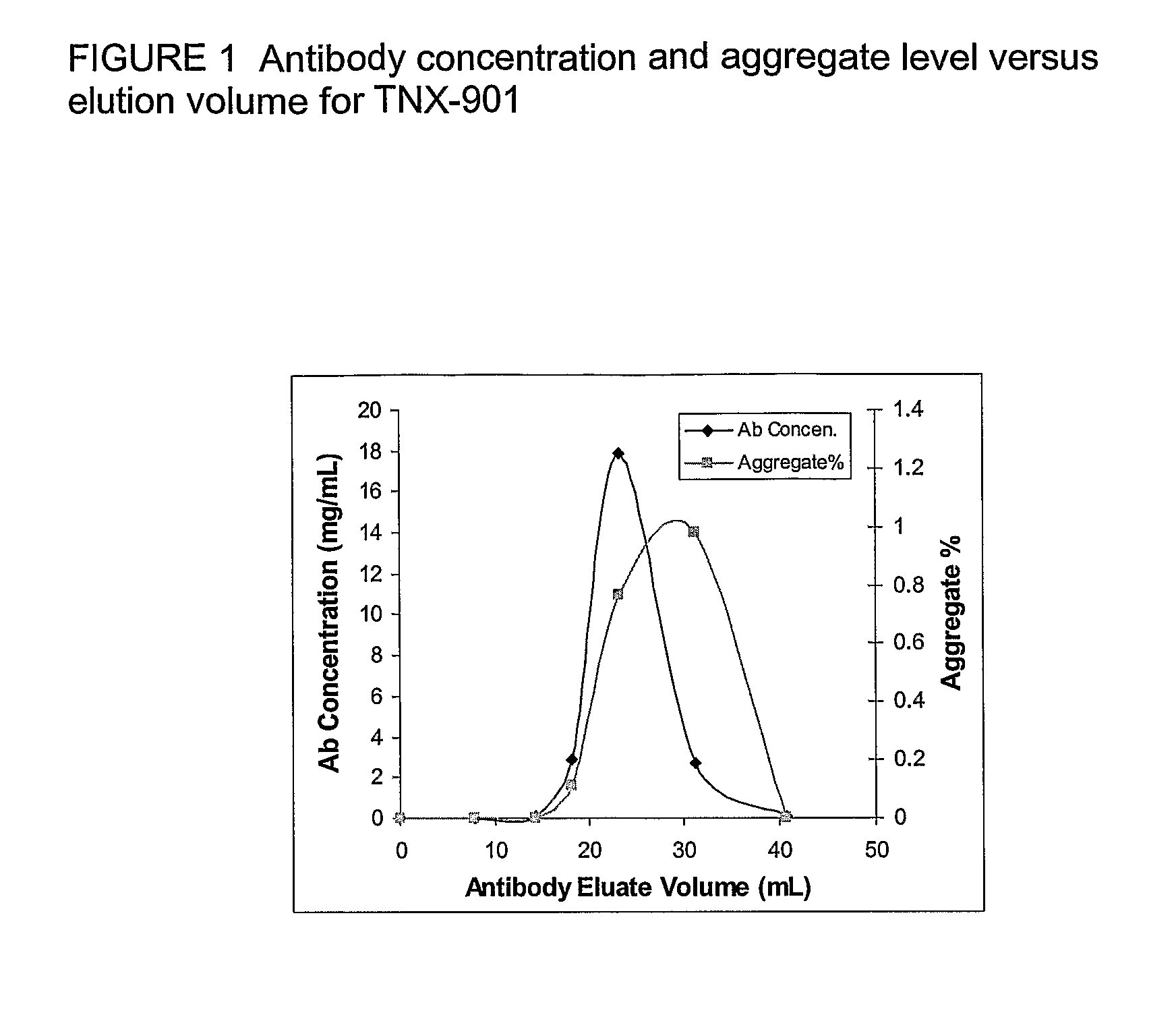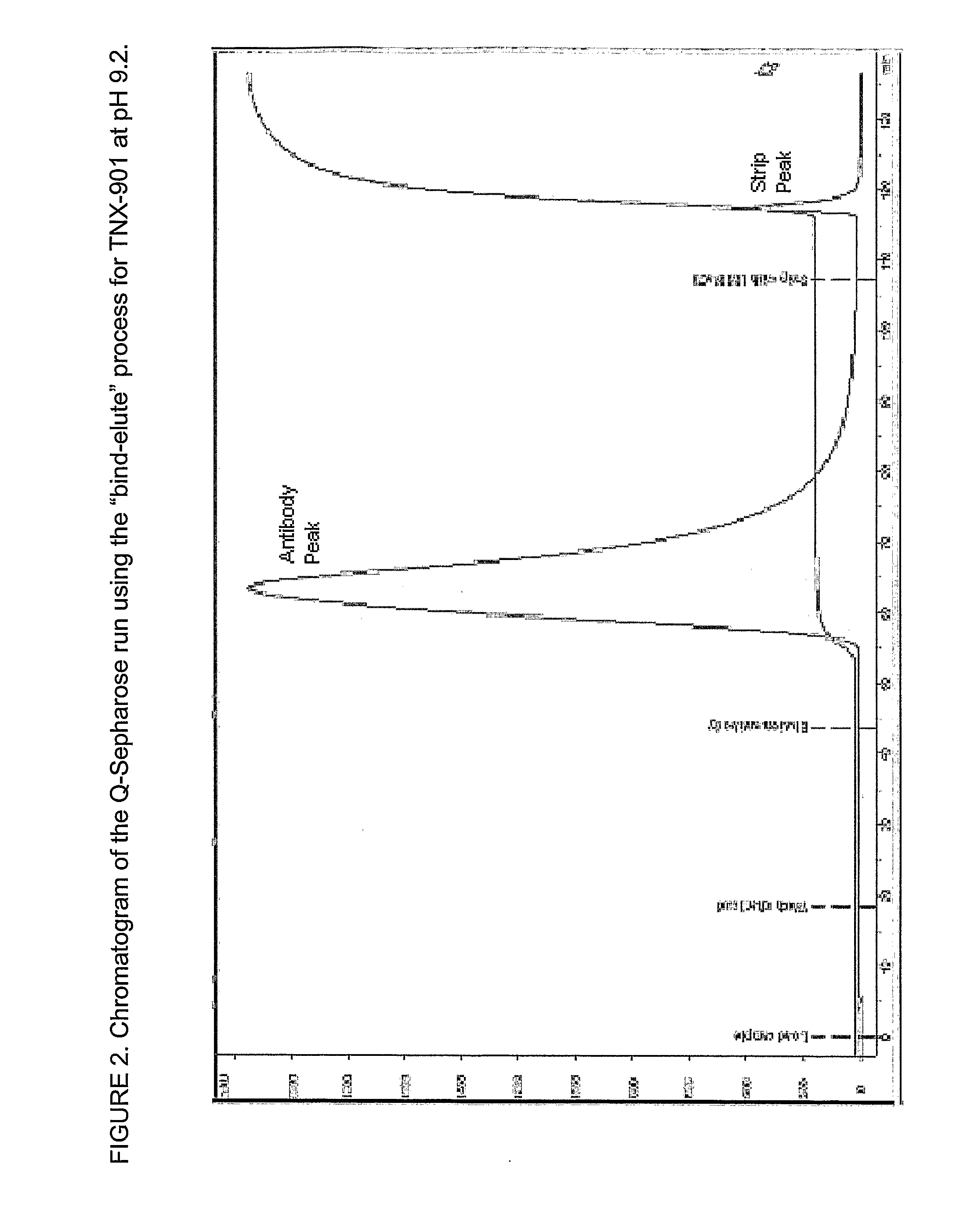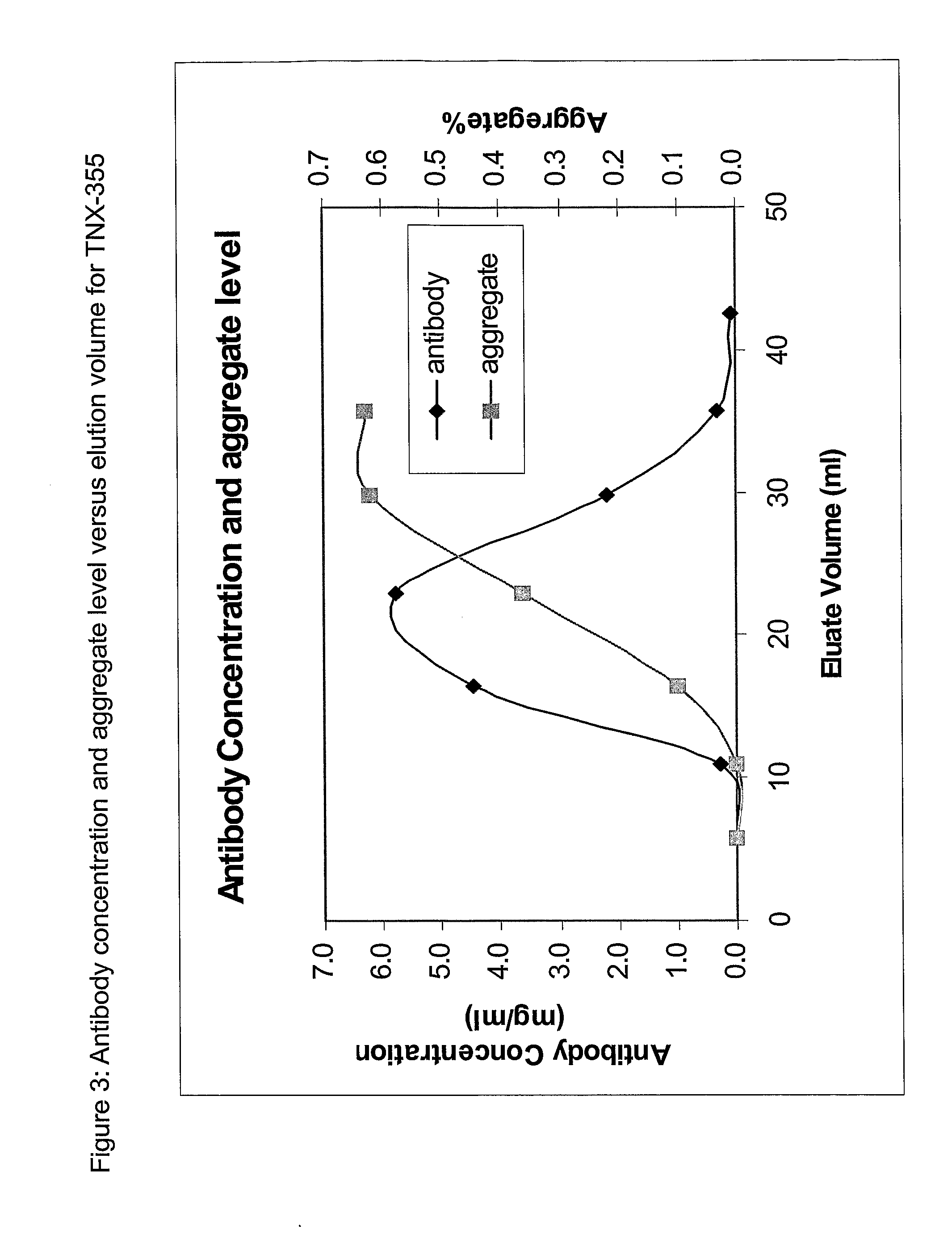Method For The Removal Of Aggregate Proteins From Recombinant Samples Using Ion Exchange Chromatography
a technology of ion exchange chromatography and aggregate proteins, which is applied in the field of removal of aggregate proteins from recombinant samples, can solve the problems of difficult or impossible separation of two by traditional linear gradient conditions, and achieve the effect of efficient removal, efficient removal of aggregates, and efficient removal
- Summary
- Abstract
- Description
- Claims
- Application Information
AI Technical Summary
Benefits of technology
Problems solved by technology
Method used
Image
Examples
example 1
Sample Preparation Prior to Chromatography
[0035]A cell culture supernatant containing a desired antibody to be purified may be processed through an immobilized Protein A column, e.g., PROSEP A (Millipore) or MabSelect (Amersham Biosciences). The antibody sample may also be applied to a hydrophobic interaction column (HIC), e.g., Phenyl SEPHAROSE FAST FLOW® (Amersham Biosciences), or cation exchange, e.g, CM-SPEHAROSE FAST FLOW® (Amersham Biosciences). The antibody preparation may be stored under appropriate conditions at this stage. The present process for aggregate removal may also be performed prior to any purification steps.
[0036]In this example, an anti-IgE antibody, TNX-901, comprising an IgG1 framework was used. Prior to Q-SEPHAROSE FF® anion exchange chromatography, the monoclonal antibody sample was adjusted to the desired pH for loading the antibody onto a Q-SEPHAROSE FF® column with, e.g., Tris buffer. The salt concentration of the sample was adjusted, based upon the desig...
example 2
Determination of Aggregate Concentration
[0037]The percentage of the aggregates in each prepared sample was determined, including the fractions collected through sample loading, washing and eluting steps. Superdex 200 HR pre-packed analytical column may be used to determine percent aggregate level. FIG. 1 depicts the antibody concentration and aggregate levels in each antibody fraction versus elution volume for the antibody TNX-901 following anion exchange.
example 3
Determination of Antibody Binding and Elution Conditions for TNX-901
[0038]The appropriate salt concentrations used for loading and eluting conditions at the various pH conditions were determined by applying a linear gradient of salt concentration increments under designed pH conditions. The pH range determined for loading the TNX-901 antibody sample was 8.2 to 9.2. At pH 8.2 the antibody monomers and aggregates both bind onto Q-SEPHAROSE FF® resin with loading buffer of 10 mM TRIS.
[0039]However, the salt concentrations of the buffers for loading and eluting antibody sample may be simultaneously increased when the loading buffer pH is increased from 8.2 to 9.2 for TNX-901 antibody.
[0040]For example, a Q-SEPHAROSE FF® column (1 cm ID×9 cm height) was equilibrated with 10 mM TRIS at pH 8.6. The buffer-adjusted antibody sample prepped according to Example 1 was then loaded onto the column. The antibody was loaded at −17 mg / ml of resin. Under these conditions the antibody monomers and ag...
PUM
| Property | Measurement | Unit |
|---|---|---|
| pH | aaaaa | aaaaa |
| pH | aaaaa | aaaaa |
| pH | aaaaa | aaaaa |
Abstract
Description
Claims
Application Information
 Login to View More
Login to View More - R&D
- Intellectual Property
- Life Sciences
- Materials
- Tech Scout
- Unparalleled Data Quality
- Higher Quality Content
- 60% Fewer Hallucinations
Browse by: Latest US Patents, China's latest patents, Technical Efficacy Thesaurus, Application Domain, Technology Topic, Popular Technical Reports.
© 2025 PatSnap. All rights reserved.Legal|Privacy policy|Modern Slavery Act Transparency Statement|Sitemap|About US| Contact US: help@patsnap.com



